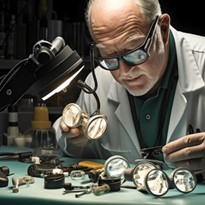Surgical procedures demand an unparalleled level of precision and focus, where even the slightest details can have a substantial impact on patient outcomes. To meet these demands, innovations in surgical equipment continually evolve, integrating cutting-edge technology with medical expertise. One such crucial innovation is the advancement in surgical headlight and loupe design. This pillar post delves into the fusion of technology with medical precision, exploring how these innovations are shaping the future of surgical practices. The following sections provide a comprehensive analysis of the latest developments in surgical headlight and loupe design, ensuring enhanced illumination and surgical accuracy while upholding patient and surgeon well-being.
I. LED Lighting Advancements for Enhanced Illumination
A. High-intensity LED Modules for Optimal Brightness
- Implementation of high-intensity LED modules in surgical headlights.
- Achieving exceptional brightness for clear visualization of the surgical field.
- Ensuring consistent and uniform illumination to prevent shadows and dark spots.
B. Color Temperature Control for Accurate Tissue Visualization
- Importance of adjustable color temperature for accurate tissue differentiation.
- Adapting lighting conditions to match the specific requirements of each procedure.
- Enhancing contrast and improving tissue visualization to aid surgical precision.
C. Reduced Heat Emission for Surgeon Comfort
- Utilization of advanced thermal management systems to minimize heat emission.
- Ensuring surgeon comfort during prolonged procedures.
- Mitigating the risk of thermal damage to delicate tissues and the surgeon's skin.
D. Energy Efficiency and Prolonged Battery Life
- Integration of energy-efficient LED technology for prolonged battery life.
- Reducing the need for frequent recharging or battery replacement.
- Enhancing sustainability and reducing the environmental impact of surgical equipment.
E. Impact on Visual Acuity and Surgical Precision
- Discussion on how enhanced illumination directly contributes to improved visual acuity.
- Ensuring accurate identification of anatomical structures and finer details.
- Elevating surgical precision and reducing the potential for errors
II.High-Resolution Optics and Anti-Reflective Coatings
Surgical procedures demand unparalleled precision, where even the minutest details can have a profound impact on patient outcomes. The development of high-resolution optics and the application of anti-reflective coatings in surgical headlights and loupes represent a significant stride in enhancing visual acuity, reducing glare, and ultimately elevating the quality of medical interventions. This section delves into the remarkable innovations in these areas, showcasing how they have redefined the way surgeons perceive and engage with their work.
A. Precision-engineered Optics for Sharp and Clear Visualization
At the core of every successful surgical procedure lies the ability to visualize anatomical structures with pristine clarity. To address this imperative need, cutting-edge surgical headlights and loupes are now equipped with precision-engineered optics. These optics combine advanced lens materials, meticulous design, and precision manufacturing techniques to deliver images that are distortion-free and incredibly sharp.
Such optics not only empower surgeons to discern intricate details but also provide a three-dimensional depth of field. This depth perception is invaluable in delicate procedures where the accurate measurement of distances and spatial relationships can be critical. By ensuring that the observed images align accurately with the surgical field, these optics foster unparalleled accuracy and confidence among surgeons.
B. Reduction of Glare and Stray Light Interference
- Glare and stray light interference have long been adversaries in the surgical theater. They not only compromise the surgeon's ability to visualize the surgical site but also induce visual discomfort and fatigue. However, recent advancements in surgical headlight and loupe design have effectively tackled this challenge.
- Innovative light management systems, coupled with precisely engineered shielding mechanisms, have significantly curtailed glare and stray light. These systems ensure that the light emitted is focused precisely where it is needed, without causing any diffusion that might hinder the surgeon's vision. As a result, surgical fields are illuminated uniformly, enabling surgeons to work seamlessly even in challenging lighting conditions.
C. Anti-Reflective Coatings to Minimize Light Loss
- The science of optics extends beyond lens design, encompassing the coatings applied to their surfaces. Anti-reflective coatings, in particular, have revolutionized the effectiveness of surgical optics. These coatings work by minimizing light loss due to reflection and, in turn, maximize the amount of light that reaches the surgeon's eyes.
- By diminishing reflections, anti-reflective coatings enhance the overall contrast of the observed image. This effect is particularly significant when working under bright surgical lights. It not only augments the surgeon's ability to differentiate between various tissue types but also contributes to reduced eye strain during prolonged procedures. Consequently, the integration of anti-reflective coatings in surgical optics not only enhances visibility but also elevates surgical endurance.
D. Depth of Field Enhancement for Delicate Procedures
- Delicate surgical procedures demand a meticulous focus on depth of field—the range within which objects remain in sharp focus. The ability to adjust the depth of field enables surgeons to selectively emphasize specific planes while maintaining clarity on others. This is particularly crucial when dealing with intricate anatomical structures that may lie at varying depths.
- Modern surgical headlights and loupes now offer dynamic depth of field adjustment mechanisms. Surgeons can tailor the focus to match the specific requirements of the procedure, ensuring that the critical elements are consistently sharp and well-defined. This advancement significantly contributes to the precision and success of surgical interventions that demand exacting focus adjustments.
E. Balancing Magnification and Field of View for Surgical Efficiency
- The balance between magnification and field of view is a delicate equilibrium that surgeons must strike. Higher magnification enables intricate details to be observed, yet it often narrows the field of view, potentially causing surgeons to miss important contextual information. Conversely, a wider field of view may compromise the ability to discern finer details.
- In response, modern surgical optics incorporate adjustable magnification and field of view settings. Surgeons can seamlessly transition between these settings based on the stage of the procedure and the nuances of the surgical task at hand. This adaptability empowers surgeons to maintain situational awareness without sacrificing the clarity of the observed area.
III. Integration of Camera Systems for Teaching and Documentation
A. Role of Integrated Camera Systems in Modern Surgery
- Advancing Surgical Visualization: Integrated camera systems have revolutionized the way surgical procedures are conducted and observed. By offering a detailed and real-time view of the surgical field, these systems enhance the precision and efficacy of medical interventions.
- Educational Value: Camera systems serve as invaluable educational tools, allowing medical students, residents, and fellow surgeons to observe procedures remotely. This fosters learning, skill development, and knowledge sharing within the medical community.
- Collaborative Consultation: Surgeons can seek expert opinions from colleagues located anywhere in the world. This real-time collaboration promotes cross-disciplinary insights and aids in complex decision-making during critical surgeries.
B. Real-time Video Streaming for Educational Purposes
- Global Access to Expertise: The ability to stream surgical procedures in real time has eliminated geographical barriers to medical education. Aspiring surgeons can learn from renowned experts irrespective of their location.
- Interactive Learning: Viewers can engage with the surgical team through live Q&A sessions, enabling a dynamic and interactive learning environment. This interactivity enhances understanding and retention of complex procedures.
- Multi-angle Perspectives: Modern camera systems offer multiple angles and viewpoints, providing a comprehensive understanding of the surgery. This three-dimensional view is far more informative than traditional learning resources.
C. Capturing Surgical Procedures for Documentation
- Comprehensive Record Keeping: Camera systems allow for the accurate and detailed documentation of surgeries. These records can serve as references for future medical practitioners, ensuring consistency in patient care.
- Review and Analysis: Surgeons can review recorded procedures to evaluate their own techniques and outcomes. This self-assessment fosters continuous improvement and refinement of surgical skills.
- Legal and Ethical Considerations: Accurate documentation can serve as crucial evidence in legal cases and disputes, ensuring transparency and accountability in the medical field.
D. Challenges of Sterilization and Infection Control
- Maintaining Aseptic Conditions: The integration of camera systems introduces challenges in maintaining sterile environments. The addition of equipment must not compromise the stringent infection control measures in the operating room.
- Design for Sterilization: Manufacturers must design camera systems that can be effectively sterilized without damaging delicate components. Ensuring compatibility with existing sterilization methods is paramount.
- Barrier Techniques: Surgeons and camera operators must adhere to strict barrier techniques to prevent cross-contamination. This involves managing cables, controls, and interfaces in a way that does not compromise the sterile field.
E. Balancing Visual Assistance with Surgeon Concentration
- Enhanced Visual Information: While camera systems provide valuable visual information, there is a potential for information overload. Surgeons must strike a balance between focusing on the surgical field and processing additional visual inputs.
- Cognitive Load Management: Continuous monitoring of camera feeds can add to the cognitive load of surgeons. Proper training and ergonomic camera system design are crucial to manage this aspect effectively.
- Customizable Interfaces: Manufacturers are working on customizable interfaces that allow surgeons to choose which visual information they want to access at different stages of the procedure. This customization aids in maintaining focus on critical aspects.
IV. Customization and Personalization Options
A. Adjustable Headband and Fit for Surgeon Comfort
- Surgeon-centric design to ensure extended comfort during procedures.
- Customizable headband length and snugness for individual preferences.
- Even weight distribution to minimize strain during prolonged use.
- Soft, hypoallergenic padding for pressure points and enhanced comfort.
- Reduced risk of discomfort-related distractions during critical surgeries.
B. Interchangeable Optics and Magnification Lenses
- Modular optics system allowing quick lens swapping for varying magnification needs.
- Versatility to adapt to different procedure requirements without changing equipment.
- Enhanced adaptability for intricate surgeries with varying depth and detail needs.
- Precision-crafted lenses with anti-glare and anti-scratch coatings for clarity.
- Reduction of eye strain and fatigue through tailored magnification.
C. Ergonomic Controls for Hands-free Adjustment
- Intuitive control placement to allow surgeons to adjust settings without assistance.
- Hands-free adjustments to optimize focus, light intensity, and magnification.
- Minimized disruption to surgical workflow by eliminating manual adjustments.
- Streamlined design prevents accidental changes during critical phases.
- Increased precision and reduced risk of contamination through touchless controls.
D. Personalizing Light Intensity and Focus Depth
- Customizable illumination settings to adapt to specific tissue characteristics.
- Variable light intensity for delicate and detailed procedures.
- Depth-focused illumination for optimal visualization at varying tissue depths.
- Enhanced accuracy in tissue identification and differentiation.
- Facilitates improved decision-making during complex surgeries.
E. Considerations for Different Surgical Specialties
- Tailored design options catering to the unique requirements of diverse specialties.
- Neurosurgery, ophthalmology, dentistry, and more - each with specific demands.
- Magnification and lighting adjustments to align with the intricacies of each field.
- Customizable features to address the ergonomic needs of various surgeons.
- Multi-specialty versatility for seamless integration into different medical disciplines.
V. Regulatory and Safety Standards for Surgical Headlights and Loupes: Ensuring Patient and Surgeon Well-Being
The field of surgical illumination and magnification has undergone remarkable advancements, with surgical headlights and loupes evolving into critical tools that augment a surgeon's precision and enhance patient care. As these technologies continue to push the boundaries of medical practice, it becomes increasingly imperative to uphold rigorous regulatory and safety standards. This article delves into the essential aspects of regulatory compliance and safety considerations governing surgical headlights and loupes, highlighting their role in preserving both patient well-being and surgeon comfort.
A. Overview of Regulatory Bodies and Standards
Safeguarding patient safety and ensuring consistent quality standards are the cornerstones of regulatory oversight within the medical industry. Various international and national regulatory bodies establish guidelines that manufacturers and medical practitioners must adhere to. These bodies include but are not limited to:
- Food and Drug Administration (FDA): In the United States, the FDA plays a pivotal role in regulating medical devices, including surgical headlights and loupes. These devices must undergo thorough evaluation to ensure they meet strict safety and efficacy criteria before they can be marketed.
- European Medicines Agency (EMA) and CE Marking: In Europe, the EMA oversees medical device regulations, and products meeting its standards receive the CE marking, indicating compliance with European Union regulations. This marking signifies adherence to safety and performance requirements.
- International Electrotechnical Commission (IEC): The IEC sets international standards for electrical and electronic devices, including surgical lighting systems. Compliance with IEC standards ensures electrical safety, performance, and interoperability.
B. Illumination Intensity Limits to Prevent Tissue Damage
The intensity of surgical illumination is a critical factor that directly impacts both the surgical team and patients. While intense illumination is necessary for clear visualization, excessive brightness can pose risks, including tissue damage and thermal injury. Regulatory standards often define the acceptable range of illumination intensity that surgical headlights can emit. These limits help prevent unintended harm while maintaining optimal visibility.
C. Heat Emission Guidelines for Surgeon Safety
Surgical procedures can be intricate and time-consuming, requiring surgeons to wear surgical headlights and loupes for extended periods. Prolonged exposure to intense illumination can lead to heat accumulation, potentially causing discomfort, fatigue, or even thermal injuries. Regulatory guidelines typically address permissible heat emission levels, ensuring that surgical devices are designed to dissipate heat effectively, thereby enhancing surgeon safety and endurance during procedures.
D. Impact of Optics Quality on Diagnosis and Treatment
The quality of optics within surgical loupes is fundamental to accurate diagnosis and precise treatment. Regulatory standards often focus on defining the optical specifications that ensure distortion-free, high-resolution visualization. These specifications encompass factors such as magnification, field of view, depth of field, and anti-reflective coatings. Compliance with these standards not only empowers surgeons with clear visuals but also safeguards against misdiagnoses and treatment errors.
E. Balancing Innovation with Patient Outcome and Safety
Innovations in surgical headlights and loupes continue to push the boundaries of what's possible, introducing features like integrated camera systems, customizable designs, and enhanced ergonomics. While these innovations can significantly improve surgical practices, they must strike a delicate balance between advancing technology and ensuring patient safety. Regulatory bodies assess new technologies to ensure that they do not compromise the established safety and efficacy standards.


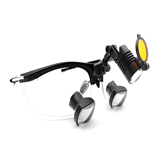

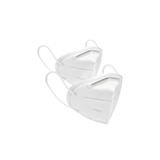
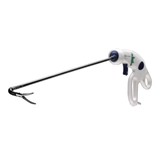
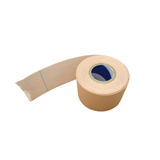
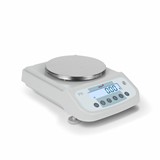


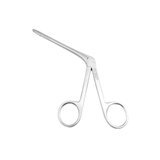
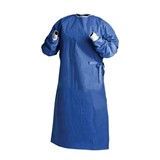
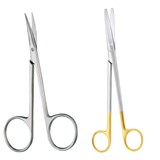
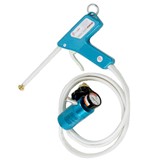
%20(1)-160x160-state_article-rel-cat.png)
